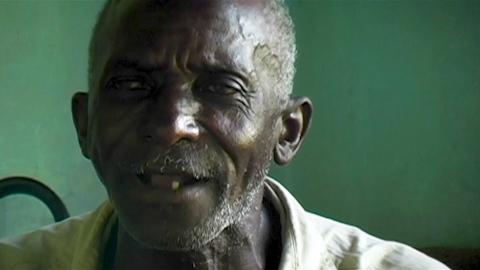Eustáquio Neves

Videostill
Trained as a chemist, Eustáquio Neves began his life as a self-taught photographer in the mid 1980s. Inspired by Arthur Bispo do Rósario, the great Brazilian visual artist who created works of art that he believed to be part of a divine mission, Neves began altering negatives, a technique that became central to his artistic practice. In the forty years since, the autodidact has grappled with the underacknowledged position of Afrodescendants of enslaved people in Brazil. His work captures and manipulates images linked to racial subjugation, intolerance towards Afro-descendant rites, and violence against Black bodies. Crispim / Encomendador de Almas depicts the daily life of Crispim, a member of one of the last remaining Baú maroon communities in Minas Gerais established in the spirit of the quilombos. Subsistence culture and the maintenance of ancestral rituals through hereditary religious practices remain central to the communities living there today; Crispim, for example, is entrusted with facilitating the transition between the world of the living and the dead. In Neves’s work, his presence is made tangible through medicinal herbs and vissungo, a form of call and response in a mix of African languages that was sung by Black enslaved miners in Diamantina.
Work in the exhibition: Crispim / Encomendador de Almas (2006–22), video installation, double projection, 6' 02". Courtesy of the artist